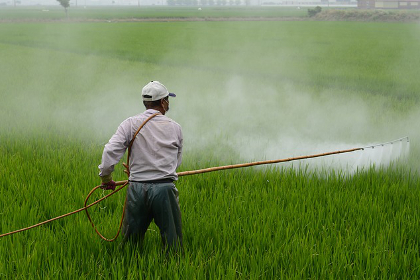
Future of Top Pesticide Uncertain after Grueling Cancer Review
The future of glyphosate, the most widely used pesticide in the world, is uncertain after a grueling, four-day review of the Environmental Protection Agency’s scientific evaluation of the chemical’s cancer-causing potential.
The 15 scientists assembled by the EPA to analyze glyphosate, the active ingredient in Monsanto’s Roundup and dozens of other weed killers, struggled to reach a consensus amid an ocean of conflicting and, in some cases, flawed data on the health and environmental effects of the chemical.
December 16, 2016 | Source: Bloomberg BNA | by David Schultz
The future of glyphosate, the most widely used pesticide in the world, is uncertain after a grueling, four-day review of the Environmental Protection Agency’s scientific evaluation of the chemical’s cancer-causing potential.
The 15 scientists assembled by the EPA to analyze glyphosate, the active ingredient in Monsanto’s Roundup and dozens of other weed killers, struggled to reach a consensus amid an ocean of conflicting and, in some cases, flawed data on the health and environmental effects of the chemical.
The scientists now have three months to make a formal recommendation to the agency that could strongly influence its upcoming decision on whether it should impose new safety restrictions on how glyphosate is used.
With the chemical’s ubiquity on farms, especially alongside genetically engineered crops, any measure the EPA takes to rein in glyphosate could have seismic economic effects for the agriculture industry. The amount of the chemical used has grown exponentially over the past 30 years and is now approaching 300 million pounds annually, according to data the EPA presented to the scientists.
